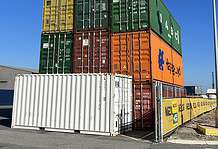Northern Minerals aimed to be the first significant world producer of dysprosium outside of China. Image: Northern Minerals.
BY AMY BLOM
LESS than two months after achieving mechanic completion at its $56 million Browns Range Pilot Plant, Northern Minerals produced its first rare earth carbonate and followed it up with a plan to double production. The company is now on the hunt for more quality rare earth mineral deposits.
Northern Minerals is speeding ahead with its flagship Browns Range project after producing its first final product in October, and announcing plans that could double output.
The announcements were followed by news that Northern Minerals had entered into a $25 million subscription agreement with NRE Industrial Group on October 15.
NRE is a subsidiary of Northern Rare Earth SYL High-tech, a specialist rare earth separation company based in China.
Northern Minerals also executed a further $2 million subscription agreement with shares at 9c with an undisclosed “sophisticated investor.”
Funds raised under the subscription agreement will be used to progress development of Browns Range Pilot Plant and to accelerate the Northern Minerals enhancement initiatives for Browns Range, exploration efforts at Browns Range, as well as for general working capital.
Northern Minerals managing director and chief executive George Bauk welcomed the new investment by NRE, which followed an unsolicited approach to Northern Minerals.
“With Browns Range now in the commissioning phase and commencing the production of mixed rare earth carbonates, we are investigating ways of enhancing the project to deliver better outcomes for our shareholders,” Mr Bauk said.
The WA-based miner announced the first production of rare earth carbonate through its Browns Range Pilot Plant, 160km south east of Halls Creek, on 8 October.
Mr Bauk said it was yet another significant milestone for the company and the project.
“This is the first production of rare earth carbonate from xenotime ore outside China and represents a new global source of product,” Mr Bauk said.
“Commissioning is progressing well and we look forward to the next milestone being the first shipment of product to our customers.”
Browns Range produced its first final product in October.
Doubling Output
On 11 October, Northern Minerals announced a $4 million proposal to introduce ore sorting technology at Browns Range after conducting investigations on the five stockpiles there to improve beneficiation and feed to the processing plant.
In turn, this would result in an increase in the amount of rare earth oxides that could be produced by the recently commissioned plant.
The technology was previously tested on the Wolverine high-grade stockpile, which demonstrated the potential to double the mill feed grade.
Testing at Wolverine showed that about 80 per cent of the value of the ore could be recovered from 20 per cent of the mass, providing an upgrade factor of four times.
Alternately, 90 per cent of the ore’s value could be extracted from about 40 per cent of the mass by ore sorting ahead of processing, providing an upgrade factor of 2.25 times.
Northern Minerals managing director and chief executive George Bauk said the announcement had many positive benefits.
“Ore sorting technology is readily available through a number of providers and our studies on the five existing Run-of-Mine (ROM) stockpiles have shown the potential for significant improvements in both processing plant efficiency and value recovery of heavy rare earth elements through its use,” Mr Bauk said.
“We believe the up-front capital cost of retrospectively installing ore sorting technology ahead of the existing Brown Range Pilot Plant circuit is justified in light of the head grade improvement demonstrated in the testwork to date, along with the forecast economic benefits delivered by greater production output – both of which will flow-through to additional medium-term value for shareholders.
“We are currently working on more testwork, approvals, planning and the funding required for ore sorting at Browns Range with a view to have ore sorting installation in Q2 2019.”
Northern Minerals has engaged Perth-based Nexus Bonum to undertake a feasibility study for the design, supply and installation of an ore sorting circuit ahead of the pilot plant at Browns Range.
The ore sorting circuit would be integrated into the existing pilot plant, directly behind the crushed ore stockpile and mill feed hopper.
Browns Range’ existing process plant had been built with a crushing capacity of 216,000 tonnes per annum (tpa), which was well in excess of the nameplate capacity of the downstream beneficiation plant of 72,000tpa, and would be suitable for the ore sorting circuit.
The ore sorter would divert the feed from the primary crusher ore stockpile over a screen.
It would then go through the ore sorting circuit to establish mill feed stockpiles of upgraded sorted ore, a separate fines stockpile, and an optional blended stockpile of fines and upgraded sorted ore.
Rejected, low grade ore would be conveyed to the stockpile for processing at a later stage.
Browns Range pilot plant is 160km east of Halls Creek.
New Discoveries
Through the development Browns Range, Northern Minerals aimed to be the first significant world producer of dysprosium outside of China.
Dysprosium is a key component in the production of dysprosium neodymium, iron-boron (DyNdFeb) magnets, which are used in clean energy and high technology applications including electric vehicles and wind turbine generators.
Northern Minerals also produces lutetium and terbium.
Terbium is used in the production of permanent magnets used in a number of applications including X-ray screens, televisions and hybrid cars.
Lutetium is one of the least abundant rare earth elements and is essential in the production of detectors used in PET scanners and catalysts in the chemical industry.
Proving its place as a future major rare earths producer, Northern Minerals announced an impressive discovery 15km south of Browns Range in WA’s Kimberley region on 28 September.
New assay results from reverse circulation (RC) drilling at the Iceman and Dazzler prospects confirmed new high-grade rare earth discoveries, including high concentrations of dysprosium.
At Dazzler, intersections included 18m grading 9.1 per cent total rare earth oxide (TREO) from 25m down-hole, incorporating 0.86 per cent dysprosium oxide.
Shallow drilling at Iceman, 400m southeast of Dazzler, produced an 11m intercept grading 4.83 per TREO from 13m down-hole, including 0.45 per cent dysprosium.
Northern Minerals considered the results notable, considering Browns Range has an estimated mineral resource of nearly 9 million tonnes with an average TREO of 0.63 per cent, containing more than 0.05 per cent dysprosium oxide.
Mr Bauk said the high-grade assays confirmed the company’s belief in having two new discoveries close to the Browns Range processing infrastructure.
“We will be mobilising as soon as practicable to follow up these results as well as other high priority areas targeting the Gardiner Sandstone unconformity,” Mr Bauk said.
Mr Baulk confirmed Northern Minerals would continue working to expand its resource base in FY19 and increase mine life at Browns Range.
“Following the change in status from explorer to produce, it is imperative that we continue to update our knowledge of the deposits and continue to expand our resource base,” Mr Bauk said.
“The recent high-grade discoveries at Dazzler and Iceman will be a major exploration focus over the coming year.
“With the three year Pilot Plant now operations, the exploration team has been charged with finding and delineating additional resources that can increase the full-scale mine life from 11 years to over 20.”








































